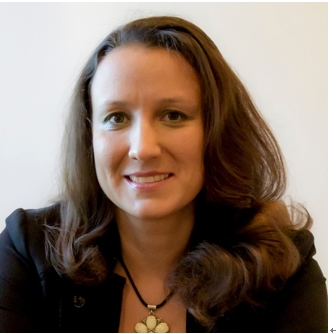Speaker: Maria Spies, Ph.D. , Professor of Biochemistry and Molecular Biology, Professor of Radiation Oncology, University of Iowa Health Care Distinguished Scholar, Associate Director, Center for Biocatalysis and Bioprocessing
Time: 9:00-10:00 am, November 14, 2022, GMT+8
Venue: Zoom Meeting ID: 910 9636 7823 Password:cqbcqb
Abstract:
Replication protein A (RPA) plays a key role in most cellular DNA metabolic events. Virtually every single-strand DNA (ssDNA) intermediate in the cell is rapidly bound by RPA which then melts secondary DNA structures, activates the DNA damage response, and hands off ssDNA to appropriate downstream players. Six OB-folds commonly referred to as DNA binding domains (DBD-A, B, C, D, E and F) in RPA allow for a dynamic protein-ssDNA interaction, whereby a macroscopically bound RPA cycles between high affinity and low affinity binding modes and can be displaced by lower affinity downstream proteins.
To visualize and quantify the microscopic RPA conformational dynamics in the context of macroscopically bound protein, we constructed fluorescent versions of Saccharomyces cerevisiae and human RPA site specifically labeled with MB543, an environmentally sensitive dye. Using single-molecule total internal reflection fluorescence microscopy (smTIRFM) we showed that the RPA-ssDNA complexes are highly dynamic. Bboth DBD-A and DBD-D rapidly bind to and dissociate from ssDNA, while RPA as a whole remains bound to ssDNA. In the yeast system, the recombination mediator protein Rad52 selectively modulates the dynamics of DBD-D to allow access by the Rad51 recombinase (Pokhrel, Caldwell et al 2019 NSMB). Recently, using bulk FRET (Sharma et al. 2022 Blood) and smTIRFM (unpublished), we observed DNA binding, G-quadruplex melting, and conformational dynamics of the human gain-of-function RPA mutant associated with short telomere syndrome. I will discuss our working model of how enhanced interaction between RPA DBD-A and ssDNA interferes with its exchange at human telomeres.
Biography:
Professor Maria Spies received her Ph.D. in Biological Sciences from Osaka University (Japan). Afterwards, she moved to University of California at Davis for Postdoctoral training. She became a faculty member of Department of Biochemistry at the University of Illinois at Urbana-Champaign from 2005-2012. Afterwards, she moved to the Carver College of Medicine at University of Iowa. Maria Spies is Professor of Biochemistry and Molecular Biology, Professor of Radiation Oncology at University of Iowa, University of Iowa Health Care Distinguished Scholar, Associate Director, Center for Biocatalysis and Bioprocessing. The Spies lab focuses on the molecular machines supporting genetic integrity, DNA replication, recombination and repair.
Source: School of Life Sciences
